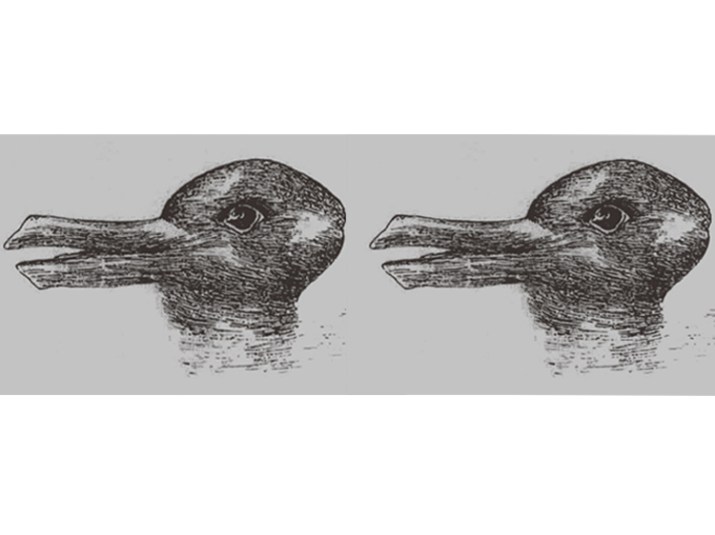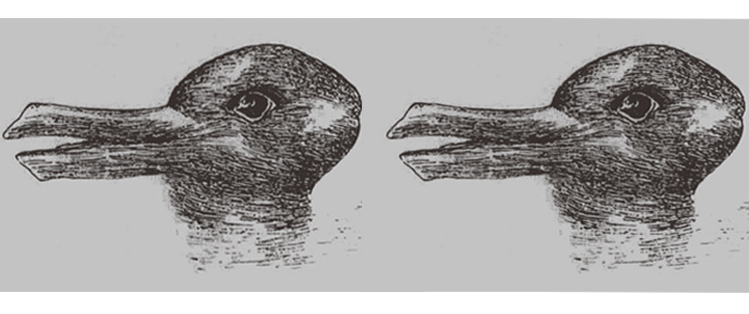New Version of Classic Optical Illusion Is Making Us Do a Double-Take

If this duck-rabbit optical illusion looks familiar to you, it’s probably because the original image has been around for a long time — since the 19th century, to be exact. First published in 1892 by artist Joseph Jastrow, the mysterious image of one duck (or is it a rabbit?) has left many people scratching their heads for decades.
If you share the first picture with friends or family members, chances are that different people will see different things in the illusion. While some folks swear they see a duck, others are positive that it’s a rabbit. It’s no surprise that this duck-rabbit optical illusion has often been used as an example of two different ways of seeing the same thing. But as Live Science reported, a neuroscientist recently took the illusion one step further to find out what people would see if they looked at two copies of this exact same image, side by side.
What animals do you see?

(Photo Credit: Heritage Images/Contributor/Getty Images)
If you saw two rabbits, or two ducks, you’re definitely not alone. In a new study on the two identical images, published in Perception, neuroscientist Kyle Mathewson, PhD, found that about half of people could not see both a duck and a rabbit at first glance. When Dr. Mathewson asked them to imagine a duck next to a rabbit, they still were not able to see it. However, when the participants were prompted to imagine a duck eating a rabbit, they were able to see it. Try this little experiment for yourself and see if it works for you!
Weird, right? As strange as this scenario sounds (we’ve never once heard of a duck actually eating a rabbit in real life), there’s a fascinating theory about why this optical illusion happens — and stops when we hear a specific cue — however odd it is.
“Your brain sort of zooms out and can see the big picture when the images are put into context with one another,” Mathewson said in a statement. “What we discovered is that you have to come up with a way to disambiguate the scene, to allow the brain to distinguish between two alternatives.”
Just goes to show that it always helps to look at the big picture — no matter what you’re looking at!
Watch the video below to see the funniest Japanese game shows that’ll make you so glad you’re not participating!
h/t Live Science
More from Woman’s World
Can You Spot the Snake Among the Watermelon?
Can You Solve the Latest Optical Illusion Stumping the Internet?
14 Optical Illusions That Are Even Funnier at the Beach












